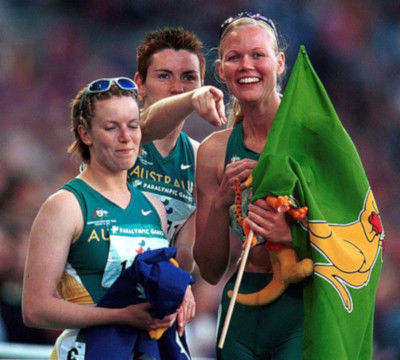The Boxing Kangaroo flag consists of a yellow kangaroo in a combative pose on a green background. The Boxing Kangaroos design has become an unofficial national symbol of Australia and is widely displayed by spectators at international sporting events such as cricket, football (soccer) and tennis, as well as at larger events such as the Olympic and Commonwealth games.
A boxing kangaroo was first depicted in 1891 when a cartoon titled "Jack, the fighting Kangaroo with Professor Lendermann" was published in the magazine Melbourne Punch. The notion of a boxing kangaroo eminates from the animal's defensive pose where it will use its arms to hold its prey in place before using its legs to attack them. The origin of the boxing kangaroo being used for a specific purpose dates back to 1941 when it was painted on Australian fighter planes in World War II to differentiate themselves from British aircraft.
In 1983, the Boxing Kangaroo flag rose to particular prominence when it was flown from the yacht Australia II, the successful Australian America's Cup sailing team. The owner of the Australia II yacht, Alan Bond, owned and licensed the Boxing Kangaroo image for production. The rights to the Boxing Kangaroo image was then bought by the Australian Olympic Committee (AOC). The widely used Boxing Kangaroo design of today was created by artist Steve Castledine.
The Boxing Kangaroo flag courted some controversy during the 2010 Winter Olympic Games when the Interntional Olympic Committee (IOC) asked that a Boxing Kangaroo flag being displayed by Australian athletes in the athletes' village be taken down due to it being "too commercial" in nature (it is a registered trademark of the AOC). This move drew widespread criticism and condemnation and the IOC eventually allowed the Boxing Kangaroo flag to fly again.

Australian athletes hold the Boxing Kangaroo flag at the 2000 Summer Olympic Games in Sydney, Australia
 WARNING - Flag Bazaar flags are lightweight and are not suitable for extended use on flagpoles
WARNING - Flag Bazaar flags are lightweight and are not suitable for extended use on flagpoles